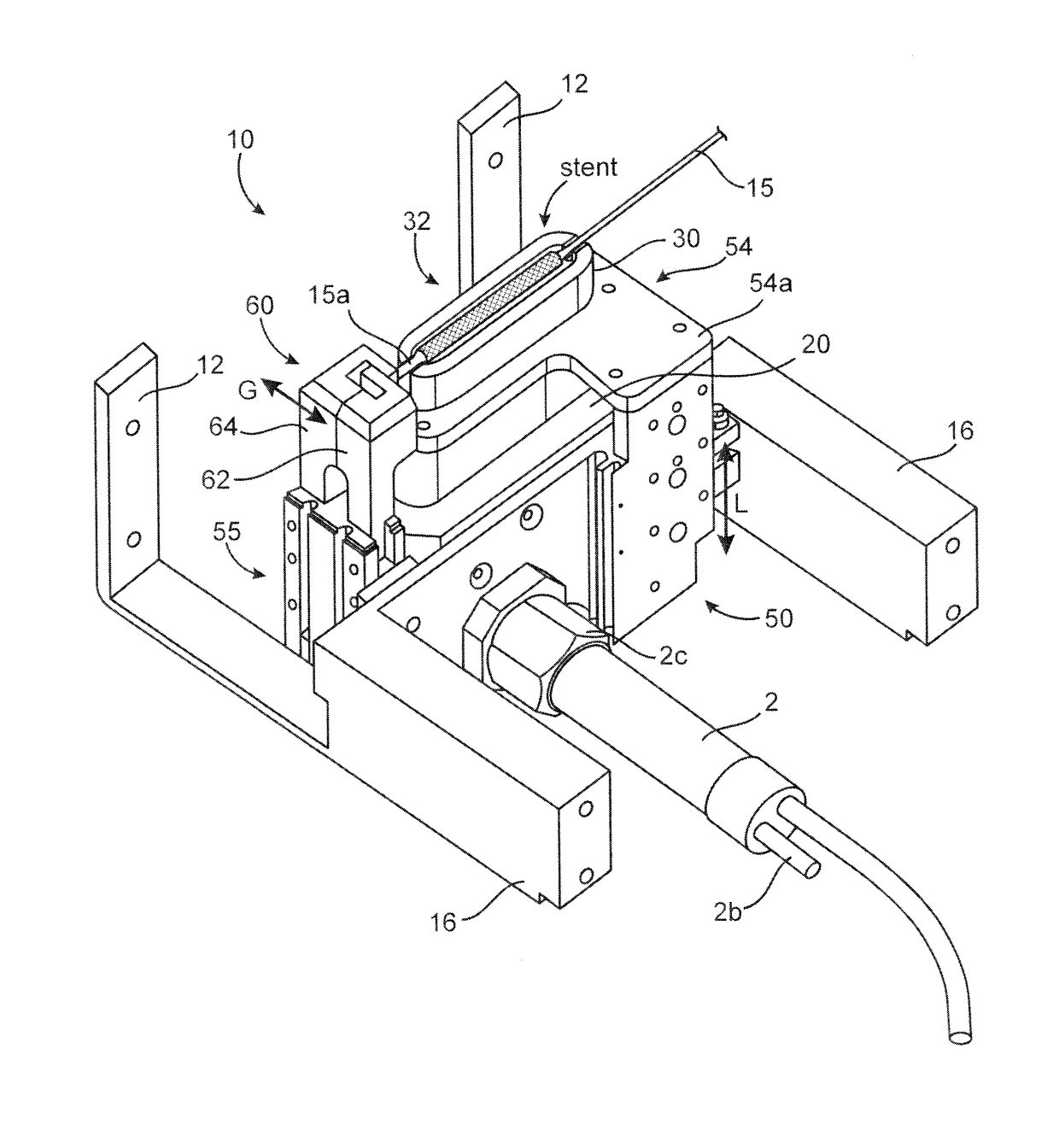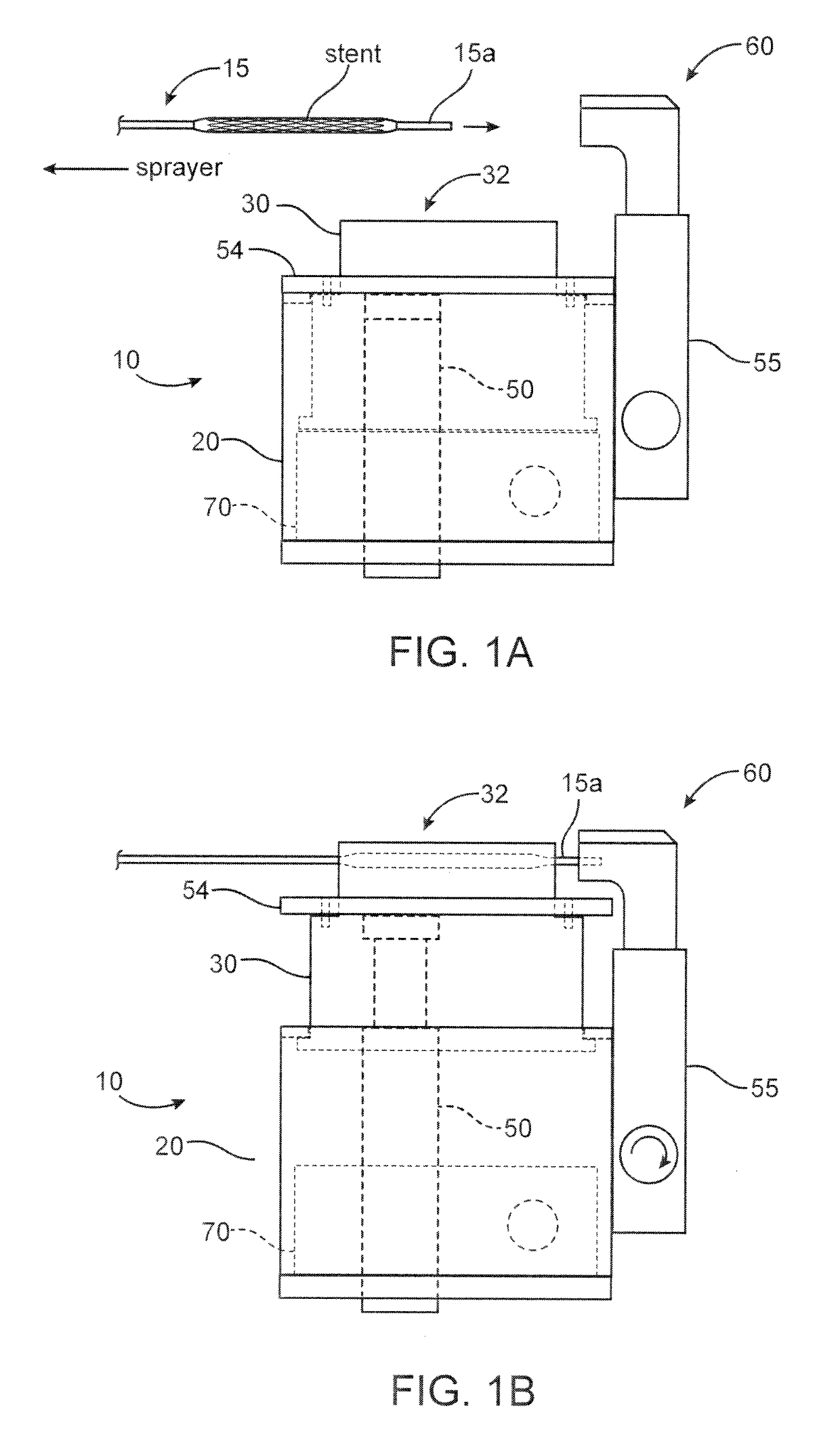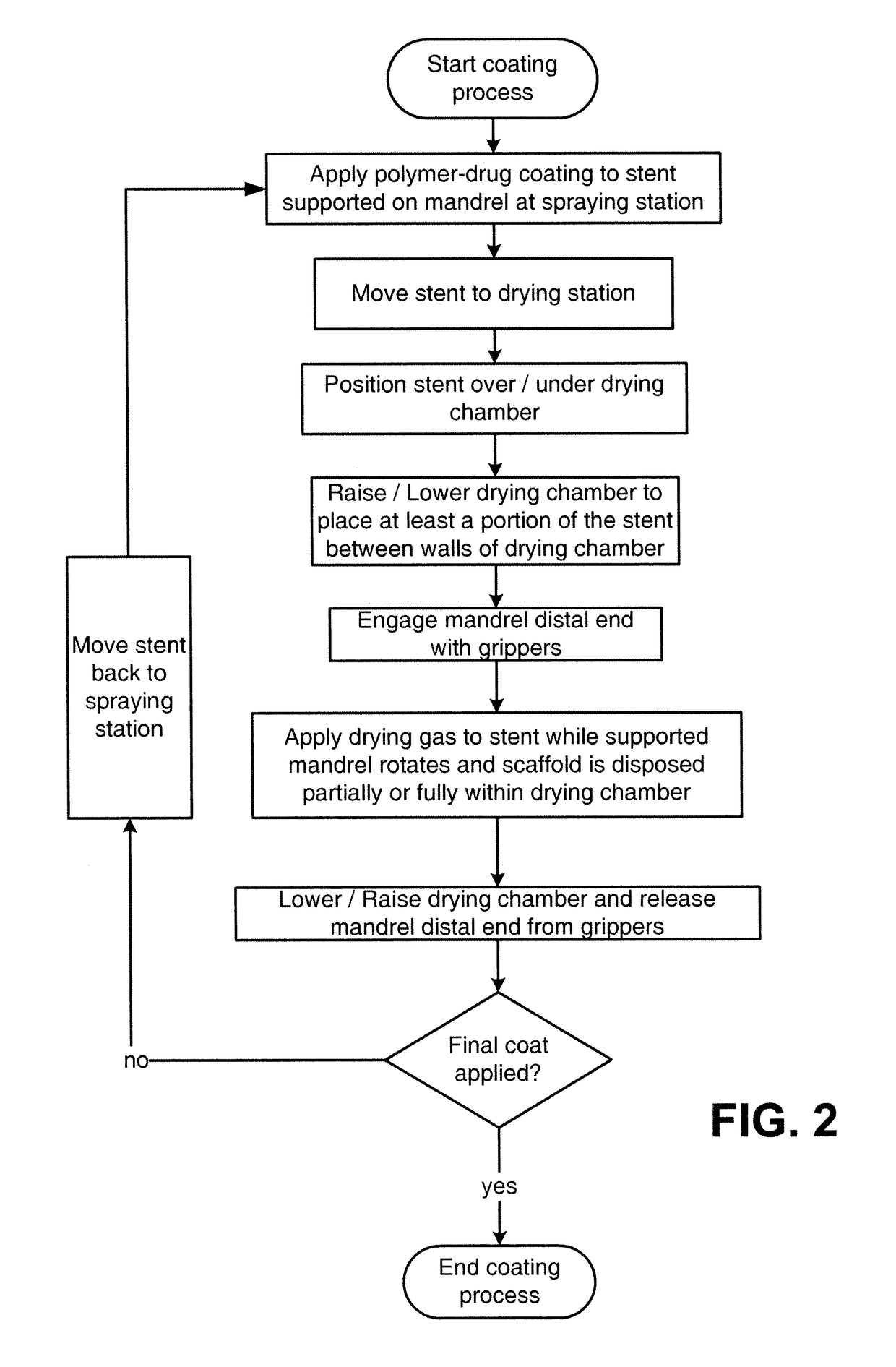Dryers for removing solvent from a drug-eluting coating applied to medical devices
a technology of solvent removal and medical devices, applied in the field of drugeluting medical devices, can solve the problems of not being able to satisfactorily meet the needs of certain clinical applications, the improvement of the drug release profile has not been met with success, and the amount or rate of solvent removal is difficult to maintain, so as to maximize the drying efficiency and uniformity of in-process solvent removal, improve product quality, and streamline the manufacturing process
- Summary
- Abstract
- Description
- Claims
- Application Information
AI Technical Summary
Benefits of technology
Problems solved by technology
Method used
Image
Examples
Embodiment Construction
[0036]According to a preferred implementation of the invention, a sprayer and dryer nozzle is used to form a drug-eluting coat on a surface of a stent. A stent is an intravascular prosthesis that is delivered and implanted within a patient's vasculature or other bodily cavities and lumens by a balloon catheter for balloon expandable stents and by a catheter with an outer stent restraining sheath for self expanding stents. The structure of a stent is typically composed of scaffolding, substrate, or base material that includes a pattern or network of interconnecting structural elements often referred to in the art as struts or bar arms. A stent typically has a plurality of cylindrical elements having a radial stiffness and struts connecting the cylindrical elements. Lengthwise the stent is supported mostly by only the flexural rigidity of slender-beam-like linking elements, which give the stent longitudinal flexibility. Examples of the structure and surface topology of medical devices...
PUM
 Login to View More
Login to View More Abstract
Description
Claims
Application Information
 Login to View More
Login to View More - R&D
- Intellectual Property
- Life Sciences
- Materials
- Tech Scout
- Unparalleled Data Quality
- Higher Quality Content
- 60% Fewer Hallucinations
Browse by: Latest US Patents, China's latest patents, Technical Efficacy Thesaurus, Application Domain, Technology Topic, Popular Technical Reports.
© 2025 PatSnap. All rights reserved.Legal|Privacy policy|Modern Slavery Act Transparency Statement|Sitemap|About US| Contact US: help@patsnap.com



